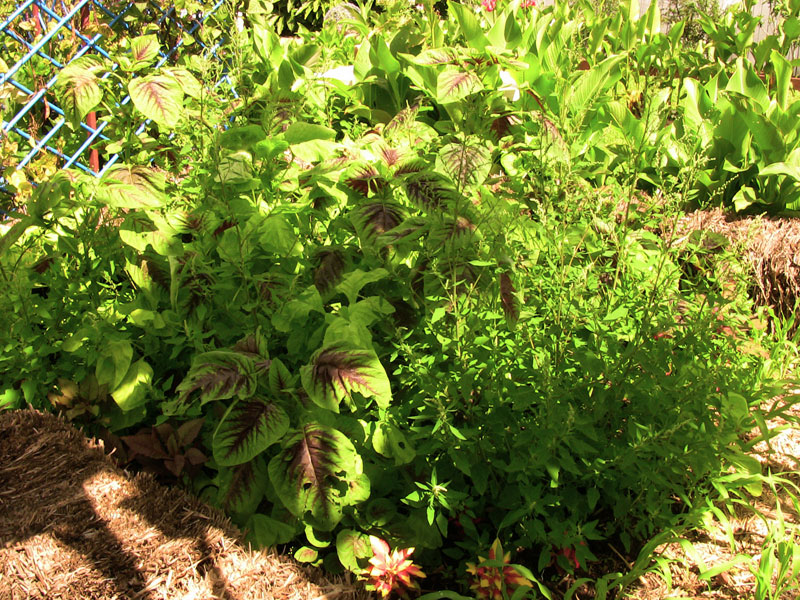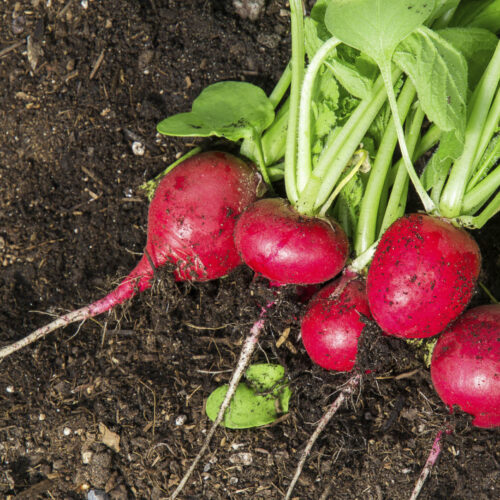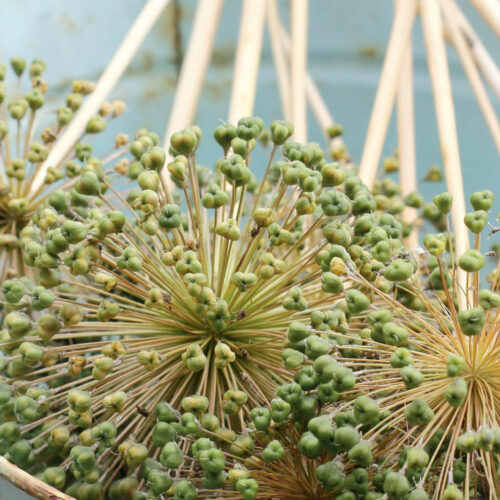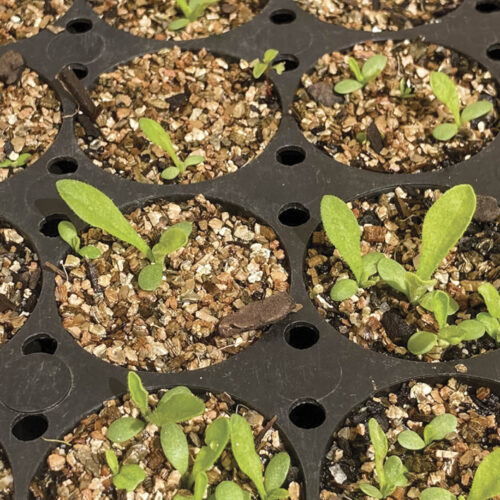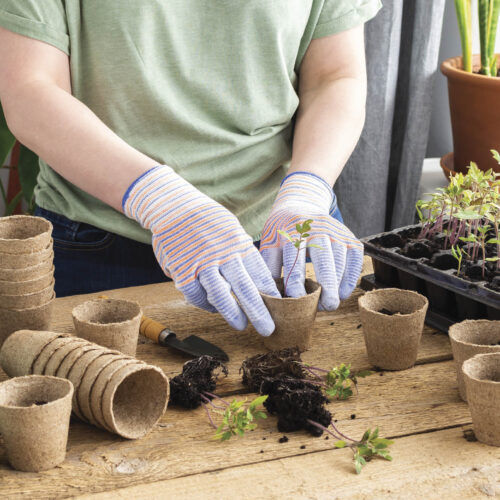Rounding up the volunteers
2009-12-21T23:54:13+11:00
By encouraging 'volunteer' crops in your garden, you can keep weeds at bay and ensure a year-round supply of fresh food, writes JERRY COLEBY-WILLIAMS.
As a child, when I bought a packet of 20 hybrid tomato seed I expected 20 good plants. Losses to pests, poor weather – or bad gardening – upset me. Last night as I made a curry with fresh, tender Chinese spinach seedlings, I realised how good it can be when gardens don’t always go to plan. The last time I sowed Chinese spinach was also the first time – four years ago. Since then all my Chinese spinach have been self-sown.
A year before that first sowing, I was planning my as yet unbuilt vegetable garden. I tried visualising what it would look like: rectangular raised beds, filled with well-dug, compost-enriched soil. In it would grow seasonal crops, planted in rows and blocks, with a few frames for climbers. It would be a neat, organised and weed-free ‘seed saver’ garden. Above all, it would be intensively cropped and feed two people.
And it almost happened. I acquired a decent range of crops from seed catalogues and from the Seed Savers’ Network. Old reliables like nasturtium, lettuce, pawpaw, Warrigal greens and pumpkin. Essentials, like tomato, coriander and rocket, and some for experiment, including Chinese spinach, Chinese celery and huauzontle (an ancient American spinach, pronounced wah-zont-lay). All of these were old-fashioned, ‘open pollinated’ cultivars.
They were deliberately chosen above modern hybrids because their seed can be harvested, stored and resown safe in the knowledge that successive generations will come true to type. The first sowings were in neat rows and blocks. At maturity, I saved their seed, storing them for the next year, and their crop remains were composted. In all I spent $75 on seed.
The volunteers
I’m a busy gardener and don’t make hot compost (which requires collecting materials over time and building a heap in one go). Instead, I cold compost, which means I can add materials as they come to hand. Well done hot composting generates sufficient heat to kill any seeds, so when you cold compost you have to keep pernicious weeds out of your heap.
However, by putting useful plants in the cold-compost heap, you can benefit immensely. Pumpkin, eggplant, tomato, pawpaw and other seeds form part of the kitchen scraps that are added to my compost heap. By allowing that first year’s crop to set seed, then adding their remains to the compost heap, I was also adding their seed. Inevitably these seeds survived cold composting, finding themselves dug back into my garden, ready to germinate under the right conditions. And so, from the second year onwards, working in compost adds more seed to my soil. Now every season – warm or cool – a seasonal suite of volunteer seedlings germinates.
A few edible ‘weeds’ were already present in the soil, their seeds having laid dormant under the lawn until building my new vegetable garden brought them to the surface. Each warm season, green amaranth and purslane sprout, and each cool season they’re superseded by chickweed and swinecress.
This is genuine cottage gardening. Four thousand years ago, Aztec farmers were growing huauzontle amongst maize, suppressing crop weeds, while shade and shelter from the maize ensured soft, tender huauzontle leaves and protein-rich seed. I haven’t stopped routinely sowing and planting different seasonal produce. But amongst and around them germinate volunteers, so if there’s a crop failure I always get something edible.
Good identification
Learning to identify plants at seedling stage is a very important lesson for all gardeners. By autumn 2007, from one freshly dug, well composted bed, so many volunteer seedlings sprouted that I had no need to deliberately sow anything.
To make things work, I first had to observe where each species was growing best. At either end of the bed grew tomato seedlings. I removed all other species around them and then thinned the tomatoes, leaving two single rows which I supported with a frame.
I progressively hand-weeded the bed, creating separate blocks each of which contained a single food plant. Out of seedling chaos emerged order – blocks of eggplant, sweet basil, mustard, coriander and rocket. The result looked as if they had been carefully sown. Good quality food flowed from that bed for four months from winter to spring.
Another advantage is that most of the thinned seedlings can become food straight away. I routinely thin two or three times to avoid overcrowding, and this means the youngest, most tender plants become dinner (although not tomato or eggplant seedlings which are toxic). The thinned seedlings are ideal for simple, seasonal fare like stir fries, stews, salads, sandwiches, soups and curries. I still save seed, and if it’s not needed for dealing with crop failures, it can be used for green manures, and for sharing with friends.
Seasonal insurance
This dual approach of cold composting and home-saved seed is great for confidence building. If you’ve got hundreds of volunteers popping up and you’ve got thousands of saved seed just in case, who cares if snails get their share? Of course, you can’t let success muddle your priorities. Crop rotation remains an essential technique for preventing the build up of pests and diseases. But if, like me, you have sufficient diversity in cool and warm season plants that can be saved for seed, it’s simply a matter of thinning and culling.
This autumn, a batch of ‘Tommy Toe’ tomatoes sprouted from some compost worked in around the base of a bamboo pyramid, ending my indecision about what should supersede my summer-sown bitter cucumber. They reached three metres high and rained tomatoes for three months.
Five years on, I have few real weeds in my garden. Mulching – along with my ‘easy care’ volunteers – suppresses most of them and there’s always something fresh in the garden whatever the conditions. The days of fretting about 100 per cent germination of a handful of expensive, hybrid packet seed are long gone.
Top volunteers
Here are some excellent plants for volunteer gardening:
- Quick growing warrigal greens, aka New Zealand spinach (Tetragonia tetragonioides), is a ground-hugging, warm-season annual. It occurs naturally along the coastlines of the southern hemisphere.
- Relatives of huauzontle with similar uses and cultural needs include fat hen, aka lamb’s quarters (Chenopodium album), epazote (C. ambrosioides), quinoa (C. quinoa), and several cultivars of orach, aka mountain spinach (Atriplex hortensis). To neutralise various unpalatable compounds these plants contain, including saponins and oxalates, steam or cook leaves and shoots for one minute.
- Chickweed (Stellaria media), nasturtium, Miner’s lettuce (Montia perfoliata), and swinecress (Coronopus didymus) are prostrate, cool season, annual weeds. Flowers, leaves and shoot tips of these three plants can be added to salads, stir fries and sandwiches.
- Green amaranth (Amaranthus viridis) and purslane (Portulaca oleracea) are low-growing, warm-season annuals with similar uses as chickweed. In New Zealand, green amaranth is sometimes braised in milk as a spinach substitute. Chinese spinach is best eaten as tender young seedlings or immature leaves cut from growing points. Some annual ornamental amaranthus such as ‘Joseph’s Coat’ are also edible. Most amaranthus reach between 1.5 to 2m tall. Purslane seed has been used by aborigines to make a protein and oil-rich seed cake.
- Lettuce, mustard and rocket make a flavoursome mixed salad, as decorative in the ground as on your plate. Their flowers attract native stingless bees. ‘Osaka Purple’ is one of the most lush and attractive of mustard cultivars.
- In temperate regions, grow coriander and sweet basil in the warm seasons, in the subtropics all year round. Both herbs seed profusely, and coriander seed can be ground into spice. Regularly water amaranthus, coriander and sweet basil seedlings but reduce once well established.
- Unlike ordinary ‘stick’ celery, which is harvested whole and over a relatively short period, Chinese celery can be picked over four to six months. Its richly-flavoured leaves are a good pot herb, while you can pick stalks for salads. Use ground celery seed as a seasoning. Other ideal volunteer Asian vegetables include dai gai choi and mizuna.
- Eggplant, pawpaw, pumpkin and tomato seeds survive cold composting. In temperate regions seed germinates in summer, while in the subtropics eggplant and tomato seeds germinate all year round. Pumpkin seed can be roasted and their flowers added to salads and stir fries, or cooked in batter.
- Leaves and shoots from all of the plants mentioned, except eggplant, tomato and pawpaw, can be grown as green manures from saved seed, and are also feed supplements for poultry and stock.

